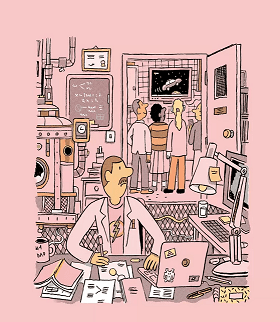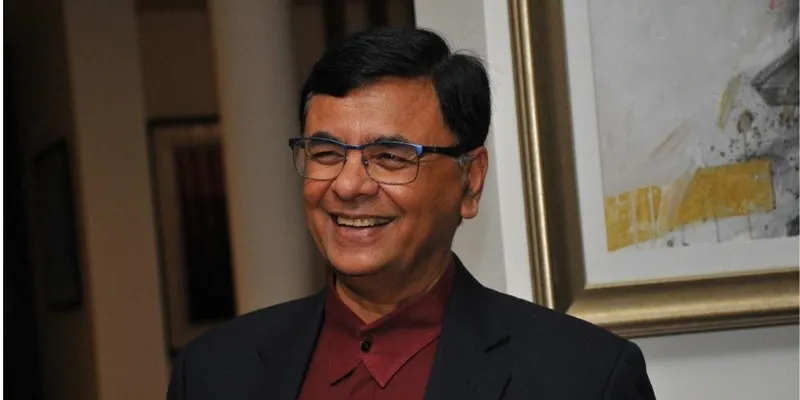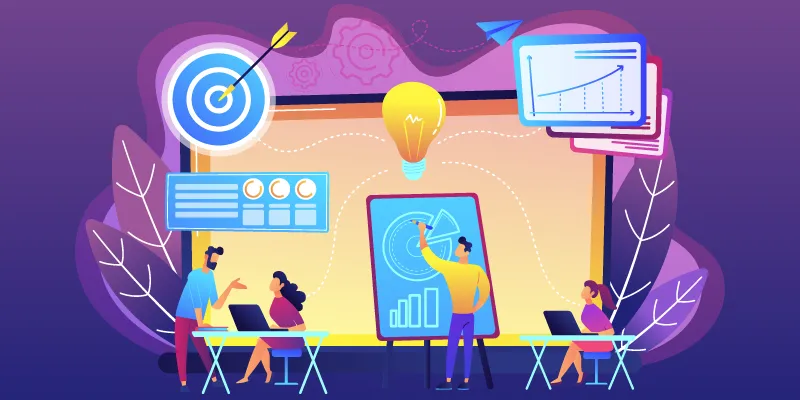By Brian Solis.
Under pressure to act fast during the pandemic, businesses sped up their digital transformation plans, compressing their timetables from years into months. Now they face the next phase of evolution, what digital prophet Brian Solis calls the “novel economy”. For businesses to adapt and thrive, says Solis, they must take a more profound and humanistic approach to transformation.
Stephen Shaw, Chief Strategy Officer of Kenna, and Brian Solis, recently had a refreshingly honest conversation about the real future of digital transformation and customer experience.
Digital Darwinism: An Interview with Brian Solis, Global Innovation Evangelist, Salesforce and Renowned Digital Prophet and Author
When the pandemic first struck, most businesses were stunned by the severity of the impact. Seeing people storm online for essential goods made them take stock of their digital readiness. Alarmed by how unprepared they were, they fast-tracked their digital transformation plans.
Up until that moment, those digitization efforts had plodded slowly along, mainly concerned with finding quick wins by increasing efficiency and productivity. Improving the customer experience was often a more distant goal, modest in ambition, meant to fix the broken parts. If a business was imaginative enough to dream up bolder ideas, those plans invariably got pushed into the future, since there was no pressing urgency.
Now those same businesses are scrambling madly to catch up to their customers, compressing their digital roadmaps from years into months, worried about losing ground to challenger brands or more agile competitors. Already the pandemic has mowed down a slew of bricks and mortar retailers who were slow to adapt to an omnichannel world. Other sectors too have been caught flatfooted – travel, hospitality, apparel makers, out-of-home entertainment, just to name the worst hit. The businesses that have managed to pivot quickly are the ones with the foresight to have invested intelligently in digital transformation, and were ready to absorb the sudden surge in ecommerce traffic.
Even with a vaccine in sight, businesses are likely facing a slow recovery and a populace whose habits and attitudes have been deeply affected by months of internment. Just how enduring those changes are likely to be is on every marketer’s mind right now. Early evidence from China suggests that people might revert to old shopping habits quickly, judging by the rapid return to normal in that country’s retail spending after they quelled the virus. But China’s health crisis was over too soon for new habits to take root. Whereas people still waiting for the pandemic to end may never want to return to the way things were before.
Of course, digital prophets like Brian Solis have been warning about this moment of reckoning for years. As the bestselling author of such books as “Business As Usual Is Not an Option”, still a highly relevant read eight years later, and the prescient “What’s the Future of Business”, he has been a leading voice for holistic digital transformation. He has long argued that society and technology have been evolving much faster than businesses’ ability to adapt, leading to what he calls “digital Darwinism”: the speed at which companies evolve to survive and thrive in a digital economy.
At the start of this year, even before the pandemic hit, Brian wrote that “digital transformation will start to become synonymous with business modernization and innovation”. Competing for the customer of the future, he predicted, will become “mission-critical”. Clearly, we’ve now reached that inflection point, much faster than even he might have thought possible. Facing the biggest disruption in living memory, we’re entering a “novel economy”, as he calls it, meaning the old playbooks are of no use anymore. That’s where I started the interview, wondering what marketing’s role is in the digital reengineering of the customer experience.
Brian Solis: Customer experience has not really been owned by any classical group that spans the organization, right? Just that role has not really existed. And even if you have somebody like a chief customer officer, it’s still only relegated to aspects of the journey not necessarily the entire experience. So, when we talk about customer experience, we tend to think about it as a practice or a cost center in worst case, where we’re looking at it with traditional metrics, we’re looking at it as a traditional model, as we put X, Y, and Z into this, what do we get back from it and how quickly?
If you think about simple metrics like in customer service, you know, there are some metrics that we look at how quickly we can get someone off the line, not necessarily how does someone feel when they’re off the line. So, we have to rethink the entire model of what it means to invest in customer experience. And I wrote two articles, one in “Forbes” which is the one that Tom Fishburne thankfully picked up, and another one yesterday on LinkedIn, which was really focused on the concept of adding an apostrophe as to customer experience so that we could personalize the conversation – humanize the conversation is probably a better word – and see what the experience is from their eyes. And the point of it was to reset the argument or reset the conversation away from, how do we do this … to, why are we going to do this? And then how do we build from there?
Because I think what we’re trying to do today is attack it from the classical models that we have built today and that leads to the typical things like politics, and egos, and silos, and budgets, and resources, and constraints, and priorities that are focused elsewhere. When in fact, we could show that investing in the word experience, which just simply means an emotional and intellectual reaction to any moment. If we looked at it that way and measured it that way: How did someone feel? How did someone react? What did someone do? And what is the memory that someone takes away from that moment and how do those moments add up together? We can now reconstruct not only customer experience but the entire brand relationship. From there, anyone who cares about human beings could lead the charge for bringing together the organization in a much more cross-functional way, that’s productive, that’s optimized, that’s customer-centered, that’s joyful even, and then we can start fixing the broken things and start innovating in the areas that we’re not investing in today. So, it’s complex, but it’s possible, it’s just, we have to shift perspective.
Stephen Shaw (SS): So there’s this current pandemic, this global crisis we’re facing, that all businesses are wrestling with today. I think you’ve said, it’s awakened a sense of urgency amongst businesses that some level of change is required, and I think you talk about the “novel economy”. You’re suggesting, I think, that this is a matter of hitting the total reset button, this isn’t just accelerating digital transformation, this is a total reset in how businesses have traditionally operated, is that fair to say?
Brian: It’s more than fair to say. So let’s take a step back, the novel economy is something that I introduced to studying these times in this pandemic. I talk about it as “BC”, sort of before COVID, what was the state of the world? What was the state of customer relationships? What was state of brand? And then after disruption, “AD”, is, instead of what we’re referring to it as this new normal is actually taking a step back again and realizing, no, this is not the new normal, this is an “interim normal” while we play out, specifically in the United States, politics, but everywhere in the rest of the world, health, where we’re focused on vaccines, treatments, we’re focused on new social behaviors and socioeconomics associated with that. Then what we actually see is a plan to move forward in this interim normal, and also setting the stage for this post COVID world.
The novel economy was this three-stage approach that looked at digital transformation, that looked at customer experience, that looked at also innovation in terms of digital business models, to say, when you have a customer thrust into a digital-first world simply because they’re not as physical as they were before, then we have to take Phase One, which is survive: How do we explore the customer transformation that’s happening, right? Because they were emotionally affected, they were psychologically affected, they’re spending differently, they’re not spending, what they’re buying is different, and has changed radically since March 1st just in the few short months that we’ve been hit with this pandemic, understanding that to ensure business continuity, to ensure stabilization, but then setting the stage for Phase Two in this interim normal, which is alive, which is looking at then: How do we start to not only do great things, deliver greater experience in this interim normal that goes beyond the post-apocalyptic scenes that we see everywhere, like plexiglass, and masks, and horrible news headlines every single day, to find ways to deliver joy in these times, to rethink the customer experience, to look at digital-first and look at ways that we could deliver “wow moments”. And then build the muscles, build the expertise, build the intellect to set the stage for Phase Three, which is thrive. So once we start to come out of this, once we start to think about the world in a post-COVID way, that we’re actually ready to just accelerate, to excel, to be in this new and innovative position that’s nothing like the pre-COVID world, there’s no going back to normal. Many facets of normal were part of the problem to begin with. And this Phase Three opportunity is a true competitive advantage because a lot of companies are just looking at ways where they can cut costs, save resources, and just kind of coast through these times, when in fact history shows us that any time of disruption, whether it’s health-related, or it’s economic-related, that we can thrive and innovate and we have thrived and innovated in these times before. (10.53)
SS: So customers for a long time now have been out ahead of businesses and the market, certainly in terms of their expectations of what they think an experience should look like. Are you suggesting that businesses are gonna have this epiphany now where they’ve been so slow up until now to really digitize their businesses, to transform their businesses as you’ve been describing them? You’re suggesting that this crisis is something not to waste, to take advantage of, and then to catch up, if you will, to where customers are – but aren’t customers now coming out of this crisis going to change even more? And I think that’s what you’re implying. What do you see as the biggest permanent shifts that, coming out of this, we’re gonna see amongst customers, consumers, the market in general, and then how is that gonna impact things? I mean, you referenced, I think just now, the adoption of e-commerce has accelerated. What are some of these other shifts that are gonna force businesses to make change that they’ve been very resistant to in the past?
Brian: Well, there’s that famous saying, never waste a good crisis. You know, the problem with change is that it’s hard and oftentimes change is limited by the vision of those who are making the decisions, those who are in charge of the organization. So, if they don’t see the world or feel the world the way that it’s changing or evolving or being disrupted, it’s very difficult for them to actually empathize with it and create a sense of urgency, to then allocate resources and drive that change. As I used to call it before COVID, the “undercover boss moment”, if you’ve ever watched that show. Every executive who’s ever gone through, you know, walked in the shoes of their employees and their customers, leaves that experience a better person, more informed and enlightened person, a more driven and inspired person, and everything changes after that, or at least it should. And what we miss oftentimes is that undercover boss moment in much of our work. So COVID, you know, for better or worse, has given that undercover boss moment or that sense of urgency to decision-makers. Now the question is, what are they going to do about it? And this is where true competitive advantages are forged, and competitive disadvantages are spotlighted.
What they need to do is actually take advantage of the fact that customers have, by default, had to become digital-first. The thing about digital is that it makes or breaks the customer journey that you have today. Most of this, we’re essentially seeing 10 years of e-commerce evolution happen in a matter of weeks, and so most companies were unprepared for it. Many businesses were also affected by supply chains, of which customers have no idea what that even means, they don’t care about the backend, they just want what they want when they want it. And that’s about, you know, a decade or so of grooming, you know, customers that had smartphones, social media, their favourite apps or services that were delivered to them, or curb side pickup experiences. This is a consumer that’s evolved and now you have added to that a consumer that was not necessarily digital-first, but now has to be digital-first. So it’s an incredible demand and also an incredible opportunity for executives. So what they have to do is say, “All right, pre-March 1st, let’s ditch everything we knew about the customer or what we thought we knew about the customer and let’s start over.”
What are they doing? Where are they going? What’s important to them? What are the questions that they’re asking? What are they finding? What are they connecting with? And let’s start to rebuild. Let’s focus on the touchpoints that are broken. Let’s focus on the touchpoints that are missing, and let’s also focus on how we speak to them.
If we are learning so much about them, then this means that the opportunity for how we think about customer experience, the experience itself, how we talk, how we brand, how we market, everything can now become much more empathetic, and empathetic in a true sense, not in the buzzword, marketing-CX sense, like truly understanding who that person is and what they’re doing, because they’re evolved, they’re leaving signals with everything that they do and it’s our opportunity, our chance to learn from them. (15.14)
SS: Beyond the faster adoption of e-commerce, the discovery that they can get products shipped overnight quickly, whatever they want, beyond that change in habit, is it going to be also a permanent shift in attitudes that lie beneath the surface, people’s attitudes toward business, toward social interaction, toward life, really, are people’s attitudes gonna fundamentally shift along with everything else here and how will that impact sort of marketing’s approach do you think? You mentioned empathy, for example.
Brian: Steve, these are great questions. They have already started to change, and this is one of the reasons why I became, in the ’90s, a digital anthropologist because you could see how the consumer internet at the time was starting to give people experiences that they just didn’t have before and once you had these new and incredible experiences, it makes everything else before that seem obsolete or outdated. And so you want, you crave, more of these experiences, the conveniences that they give you, the personalization that it gives you, all of the attributes then that forge or lay the foundation for what their standard for experience should be. So now, post-March 1st, you know, it’s not just that they’ve become digital, it’s also they’ve become emotionally affected by these times, whether they know it or not. And when you look at it from not just an anthropology perspective but also one of psychology, you see that this is very much like a somatic marker that has united the entire world around this great stressor of the pandemic, so, we now are much more anxious, stressed, we’re worried about our health and the health of our loved ones, we’re worried about the economy, we’re worried about our own safety and our own income, our own stability – add to that, especially for those in the United States, this incredible politicization of the disease. People are just angry, and worried, and scared, and so those are factors that go into the behaviors that play out partly in consumerism and partly just in humanity itself or greatly in humanity itself. So, understanding that is what empathy is really all about. The customer now is not only digital, but they’re also becoming much more informed and at the same time, what’s also frustrating is they’re becoming equally misinformed. And now it’s an opportunity for a brand, a marketer, a CX strategist, customer support strategist to reimagine how to be the light in this world of chaos, and it’s going to be like this for at least 18 months, even if we get a vaccine or a treatment, that’s going to take time to play out and establish herd immunity and then we also need concerted leadership, whether that comes from brand or that comes from politicians or anybody, really, to start to give faith and calm to people so that they can feel better, more focused on creating not only a better world but a better self. (18.45)
SS: So I love that expression, a better self. You know, I wonder about this, I wonder if there’s going to be just a sling back once this is all over, back to traditional consumerism, or a realization with people that you are not what you buy – and that is heretical for marketers, who obviously have spent half a century convincing people to buy stuff. And that’s the other big pivot, it’s so hard. And I love everything you’re saying, it’s just so hard to imagine right now marketers who follow, don’t lead, taking a leadership position when those principles aren’t close to the heart. Effectively you’re calling for a new generation of marketers to come onto the scene, really.
Brian: I’m calling for it – I have been calling for it – simply because the behaviors that you’re seeing now, Steve, are accelerated behaviors. They’re not new behaviors. Digital and what digital afforded was much more than just a matter of mechanisms, it was a matter of, sort of, indoctrination into a new world of possibilities, a new world of aspirations. So, yes, essentially what you have had accelerate as well that we haven’t talked about yet, is this much more conscious consumer, let’s just say, so you don’t buy to become who you are, you buy who you are, and it’s a total reset of the brand-consumer relationship, because, by default, people have to rethink. This pandemic is actually a CTRL-ALT-DEL for life. It’s making people rethink who they are, where they are, who they become, how that aligns with who they thought they would be. And you’re seeing just a real great sense of mindfulness start to play out. Well, I wish it was actually more, we have to, politics aside, this is a real opportunity to recentre who you are and who you want to be. And brands are going to have to contend with that, they have a choice in how they want to build relationships moving forward. There’s a great article in Fast Company, oh, no, no, no, it was BuzzFeed that I read, and I think the headline was, “I don’t want to buy stuff anymore.” You also had, add to conscious consumerism, you have sustainability, which was already a factor, you have global warming or whatever you want to call it to be politically correct, you also have this other thing that was actually in play too that’s not getting a lot of attention, which was minimalism. So you had the Marie Kondos of the world getting people to rethink their relationship with stuff and what you need to sustain happiness in your life. So, all of these things are just being accelerated, digital on top of it, and then the conveniences that digital gives someone and you essentially have an opportunity for CTRL-ALT-DEL for brand and marketing itself. (21.46)
SS: Well, and it’s effectively a sea change, and I’m sensing that massive shift in sentiment as well, but there is a darker side to this. And I think the darker side is around – I think you alluded to it – is this pervasive mistrust that also exists. So just as customers are starting to shift in sentiment, they’re starting to look at businesses with this, through the eyes of mistrust. And I think that’s the other thing that I wanted to point out is that, you know, truth and trust go sort of hand in glove. And I think you’ve said, it’s a precondition to have an actual customer relationship. How do brands step up and prove their integrity and not be simply seen as camouflage for selling stuff? You talked about brands being more empathetic, but translating that into actionable steps, what do brands do to become more relatable?
Brian: Think about this in terms of just the human element or the human quotient, right? Is how do I get this person in life to like me? And the other way to ask the question is, well, what’s important to this person? And can what’s important to this person inspire me to want to align with those values and those beliefs and those aspirations? Because if enough people are like that and I align with enough people then it’s inspiration for me to want to be better, to want to be changed, to want to grow, to want to learn, and to want to unlearn, right? And when you break it down into a conversation of humanity, you realize that brands can and have to be human in these times. And also we’ve been asking for this for a long time as well, and you can see the inhumanity of it all at the dawn of the pandemic when basically every commercial, every ad, sounded and looked the same, “We’re all in this together, in these uncertain times,” you know, and that, you know, look, I get it, they got a market, they got to sell, but look, really, if they want to be better, they can be better. I’ve already studied since March through this time, it’s just a matter of months, I’ve already seen waves of massive shifts in spending behaviors and values and what people want. For example, 84% of customer experiences, or 84% of customers said – this is in a Salesforce report that just came out recently – they’re gonna value brands more for the experience they deliver rather than their product or service – that’s huge. Then you look at another study, I believe it was Accenture, that said that customers are judging brands by how well they treat employees during this pandemic. You have other things like values, conscious consumerism, minimalism, like we were talking about. So now you have all of these. You also have health and safety, that’s come up in another series of research, that they’re judging brands by how safe and how well-regarded they are both just in their communications, but also in the physical experience that they deliver as well. So now essentially what you have is, if you’re paying attention and you’re using what I call data-driven empathy, right? You’re not just looking at data, you’re looking at ways to humanize the data, to feel the data, so that you can deliver something that’s meaningful like you would in any relationship, that you essentially have the opportunities to add new pillars and remove old pillars to your brand, what do you stand for? And is it something that I can stand with as a customer, and are we moving in the same direction together? Because if so, then let’s go, but you can’t do that unless you’re going to take the time to try to be human. So, you know, to your question earlier, we are absolutely talking about a new dawn of brand and marketing. (25.33)
SS: So how does marketing go from here, where it is traditionally and where baked into their DNA is brand messaging and being a pretty picture department, to making this leap to becoming a leader here? And that’s what’s really required is leadership. You’re not gonna to get it from operations, you’re not gonna get it from finance, you’re not gonna get it from any logistical part of the business, it’s gonna come from marketing. Yet marketing has lost its voice as a strategic influence in most enterprises that I see. How do they make this transformation? I mean, customer first thinking is all about marketing transformation, but there’s a tall mountain to climb right now considering where we are. How do they make that leap?
Brian: Well, let’s start with just the intent. I think that if we think about this in any way like a startup might think about it, which is, what is the market opportunity? And what does our investment in that opportunity yield us in the short term and in the longer term? And you can also project out, you know, what is the opportunity cost of not doing these things? So we could make a financial case, especially now, when in a pandemic the CFO is raised in sort of or elevated in the decision making process, everything has to go through the CFO filter. So we do want to make the case that actually investing in relationships is a competitive advantage and it is, right? Historically, actually there’s a great report by Gapingvoid – gapingvoid.com – that talks about how companies that build a culture of employee engagement and customer engagement, and it talks about the details of what a culture – because this is really, at the end of the day, what we’re talking about – is how do you build a culture of an organization that puts the customer first across all facets of the organization? And it lists out everything you need – companies that have a culture of customer-centricity and employee-centricity, a culture of a vision where we’re all moving together in a way that matters together, that they do better financially, that they have greater margins, that CEOs make more money, that CEOs are much more famous and liked by the public and also by the media. I mean, all of these attributes that you would want – that shareholders get greater returns. So the ROI is there. It’s just a matter of then finding a place where we can make a dent, right? I always believe that pilots are a great way to start. But the customer experience, right now, the customer journey, is specifically focused on e-commerce and also in customer support: those are two Achilles heels right now in the pandemic where we could find what’s broken just simply by looking at the data, listening and talking to the customer and investing in those areas, capturing a “before state” and capturing an “after state”, say in a matter of like, I don’t know, things are moving fast, let’s say four weeks, and we can show progress. We could show quick progress, and then we can expand that exact thinking across the journey until it becomes a way of being. And at the end of the day, leadership has to embrace the fact that having better customer relationships with a new customer, I call it “Generation N”, for novel, and we could talk about that maybe in a later podcast, but, by prioritizing people and learning what matters to them and what doesn’t matter to them, it should also recharge leadership. If leadership can’t embrace this or doesn’t want to embrace this or they’re stuck with stakeholders and shareholders, and stuck in the panic and the chaos, then you’re not gonna get through that. But if you look at ways to deliver light to the customer, because the customer is what matters to you, then you will find a way one step at a time. (29.24)
SS: I love what you’ve just said. Your career has largely been around the whole digital disruption of business and urging businesses to transform their practices. You certainly have been a key voice in that. 5G is coming along, the fourth industrial revolution, AI, etc, etc, etc. Is technology once again going to then force a lot of this change that you’re talking about, simply because we’re going to be dealing with an entire new reality in a number of years in the way people interact, not just with each other, but with business? Is that gonna be the true transformative force, not the pandemic, but this wave of new technologies that are arriving on our shores?
Brian: Oh, man. All right. Well, let’s have a part two because there is no quick answer to this, this is where we’ve gotten into trouble going back 20 years. So the consumerization of technology going back to the ’90s with the internet, going into the early 2000s with smartphones, social media, with mobile apps, real time everything, now looking at 5G, looking at AI automation, looking at AR/VR computer vision. We tend to lean on the technology first as an enabler for scale and efficiency and cost savings and not for the experience that it can deliver, and that’s what inspired me to write the book “X” a few years ago, “What’s The Future of Business” a few years ago.
SS: Great book.
Brian: And those were talking about experience-led technology investments, and that’s completely different. So if you take everything that we talked about, if you had insights, if you had empathy, if you had purpose for what was gonna matter to people as they were evolving, and then you apply technology to that, then you’ve got what I call multimodal digital transformation. So operational focused for excellence for employee experience, you have digital business model innovation so that it’s relevant and modern and awesome for customers and also employees, and then you have it connected by what’s human-centered design, which is at the heart of true innovation.
SS: Brian, this has been everything I thought it would be and more, that was a fantastic conversation, and if I could have a part two with you at some point, I would just welcome the opportunity. So, thank you very, very much for your time today.
Brian: Thank you, Steve. I very much enjoyed it and we can get a part two on the books later in the future for sure.
SS: I would love that option. I have so many other questions I’m gonna ask you, so thank you. Seriously, I could spend a lot of time with you. Thank you very much. Again, love your books, love your work, keep up the great work, Brian, it’s been terrific.
Brian: Thank you, Steve.
That concludes our interview with Brian Solis. As we learned, the first instinct of business during the early phase of this pandemic was just to emerge from it unscarred – making whatever operational changes necessary to survive. But simply upgrading back office plumbing or integrating new customer-facing channels is not enough. The next phase must address new customer expectations. And then ultimately, as society recovers from this trauma, an awakening to novel possibilities, when businesses begin to find innovative ways of creating customer value. At that point businesses will start to see the real benefit of holistic digital transformation: grateful customers, thankful for the role the brand plays in their lives.
Originally posted on Customer First Thinking
Brian Solis is world-renowned digital analyst, anthropologist and futurist. He is also a sought-after keynote speaker and an 8x best-selling author. In his new book, Lifescale: How to live a more creative, productive and happy life, Brian tackles the struggles of living in a world rife with constant digital distractions. His previous books, X: The Experience When Business Meets Design and What’s the Future of Business explore the future of customer and user experience design and modernizing customer engagement in the four moments of truth.














_11.37.05.jpg?1554475204)
_11.35.55.jpg?1554475213)